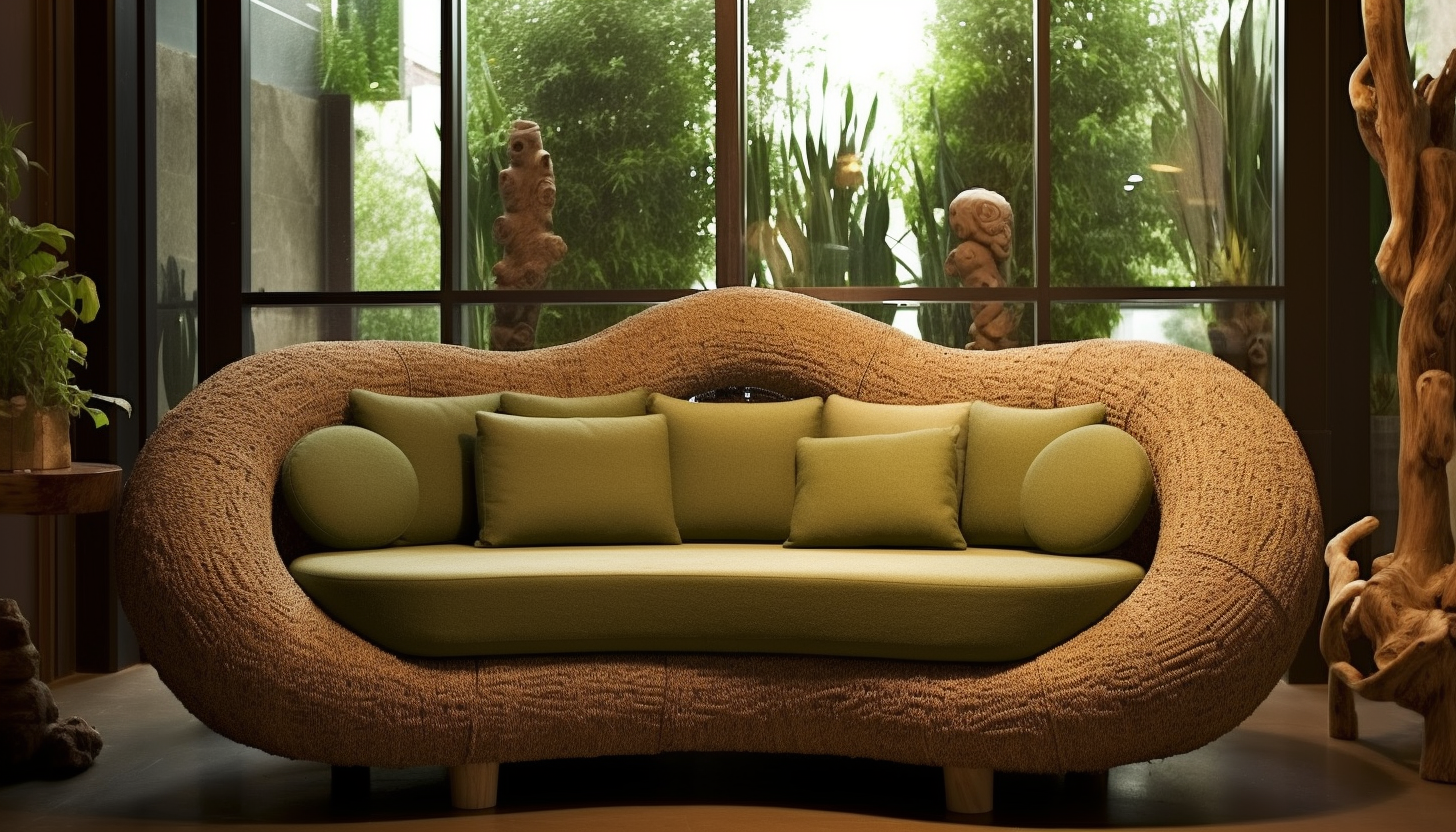P
May 28, 2023
The Couch: An Anthropological Study of Contemporary Living Spaces
#Couch
#Contemporary Living Spaces
#Anthropological Study
#Living Spaces
#Social Interaction
#Rest and Relaxation
#Furniture Evolution
#Self-Expression
#Cultural Diversity

couch-anthropological-study-thumbnail
Introduction: The Couch, A Study in Evolution and Social Interaction
The couch, a seemingly simple piece of furniture, has undergone a dynamic evolution in the context of contemporary living spaces. It is more than just a place to sit; it is a canvas for self-expression, a site for social interactions, and a marker of cultural diversity. The couch is a mirror of our society and a window into our culture. Its evolution from a simple piece of furniture to an anthropological phenomenon is a fascinating study. The couch, despite its simplicity, is a complex entity that reflects the state of our society. It is a place of rest and relaxation, where we can escape the daily grind. It is a space for social interaction, where we can catch up with friends and family. It is also a platform for self-expression, where we can showcase our style and preferences. Despite its simplicity, the couch holds a myriad of meanings and functions that make it a vital part of our homes and lives. The anthropological study of the couch aims to understand the significance of this piece of furniture in our society, and the role it plays in our cultural evolution.
The Evolution of the Couch: From Stone Beds to Sofa Sets
The earliest known couch can be traced back to the Stone Age. The Stone Bed, as it was called, was a simple slab of rock that served as a communal bed for families or tribes. The Stone Bed was not only a place to sleep, but also a place to socialize and conduct communal activities. The concept of the couch, as we know it, started to emerge in the Bronze Age, when couches became more sophisticated and started to incorporate backrests. These couches were mainly used for sitting and storytelling, a practice that evolved into the modern-day tradition of watching TV. The couch continued to evolve over the centuries, adopting various forms and functions. The Renaissance couch, for example, was reminiscent of a chaise longue, with a high back and a rest for the feet. It was mainly used as a place for rest and relaxation. The Victorian couch, on the other hand, was designed with multiple seats, often arranged in a U-shape, to encourage social interaction. The modern couch, however, has seen a significant change in its form and function. It has become a piece of furniture that serves multiple purposes, from a place to sit to a canvas for self-expression.
The Social Interaction of the Couch: A Window into Our Culture
The social interaction facilitated by the couch is a key aspect of its role in our culture. It is a space where we can relax and unwind together, sharing stories, laughs, and sometimes even a few arguments. It is a place where we can catch up with family and friends, sharing the news and gossip. The couch has become an integral part of our social interactions. It is a place where we can bond, where we can share our experiences, and where we can simply enjoy each other's company. The social interactions facilitated by the couch are a significant part of our culture. They help strengthen our bonds, foster shared experiences, and promote understanding. The couch, therefore, is not just a piece of furniture; it is a vessel for our social interactions, a platform for our self-expression, and a mirror of our society.
The Cultural Diversity of the Couch: A Global Phenomenon
The cultural diversity of the couch is another fascinating aspect of its role in our society. The design, size, and arrangement of couches can vary widely across regions, cultures, and even households. In some cultures, the couch is the primary seating arrangement, while in others, it is just one of several options. In some households, the couch is the sole domain of the homeowner, while in others, it is shared among family members and guests. The cultural diversity of the couch highlights the diversity of our society. It highlights the variations in preferences and practices, in styles and traditions. It also highlights our shared humanity, our common need for comfort, for social interactions, for self-expression. The couch, therefore, is a global phenomenon, a concept that transcends boundaries and cultures. It is a reflection of our society and our cultural diversity.
Conclusion: The Couch, an Anthropological Study
The couch, as a piece of furniture, is much more than a place to sit. It is an anthropological study in itself. It reflects the state of our society, the diversity of our culture, and the evolution of our furniture. It is a window into our social interactions, a platform for our self-expression, and a marker of our cultural diversity. The study of the couch is a journey into the human condition, a journey into our society, our culture, and our selves. It is a journey that illuminates the intricacies of our lives, the complexities of our culture, and the beauty of our diversity. The couch is more than just a piece of furniture; it is a representation of our humanity, a reflection of our society, and a window into our cultural evolution.


